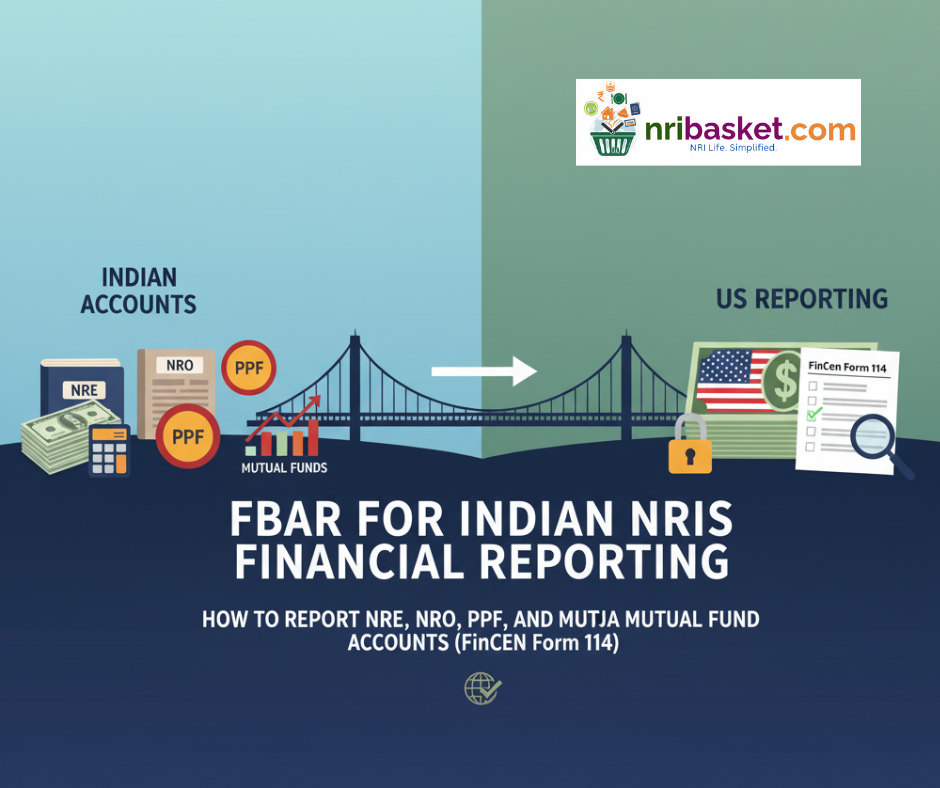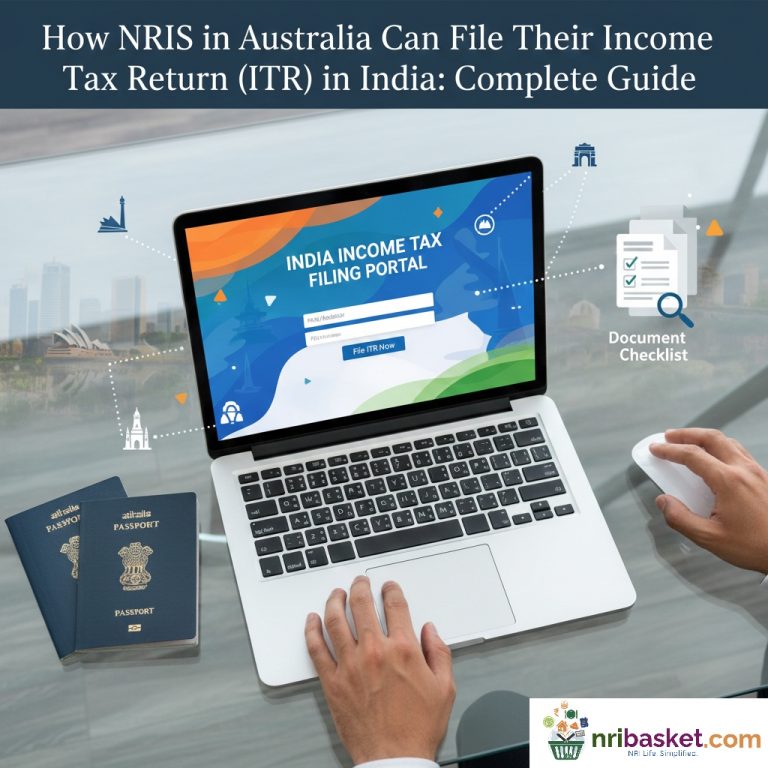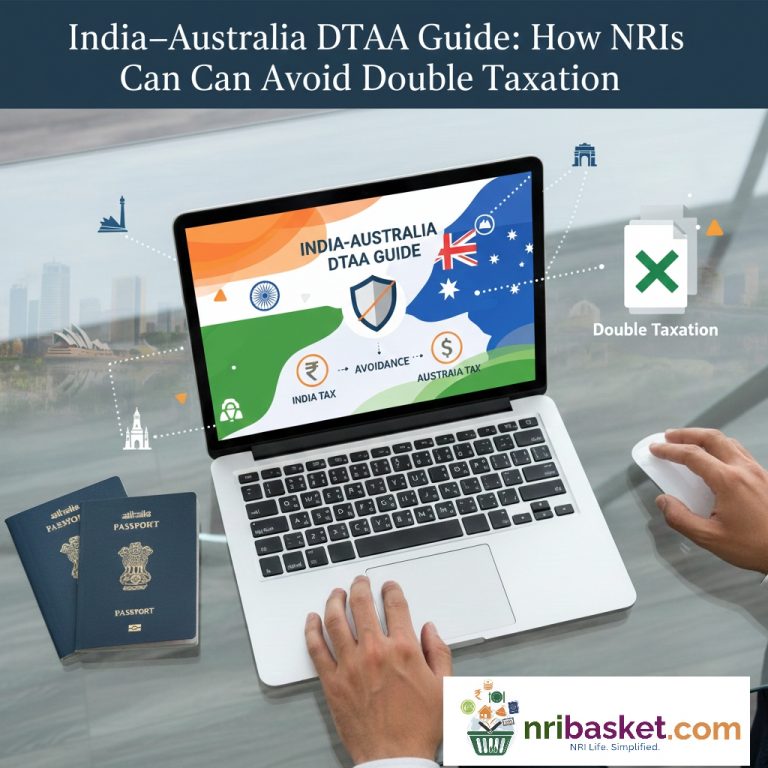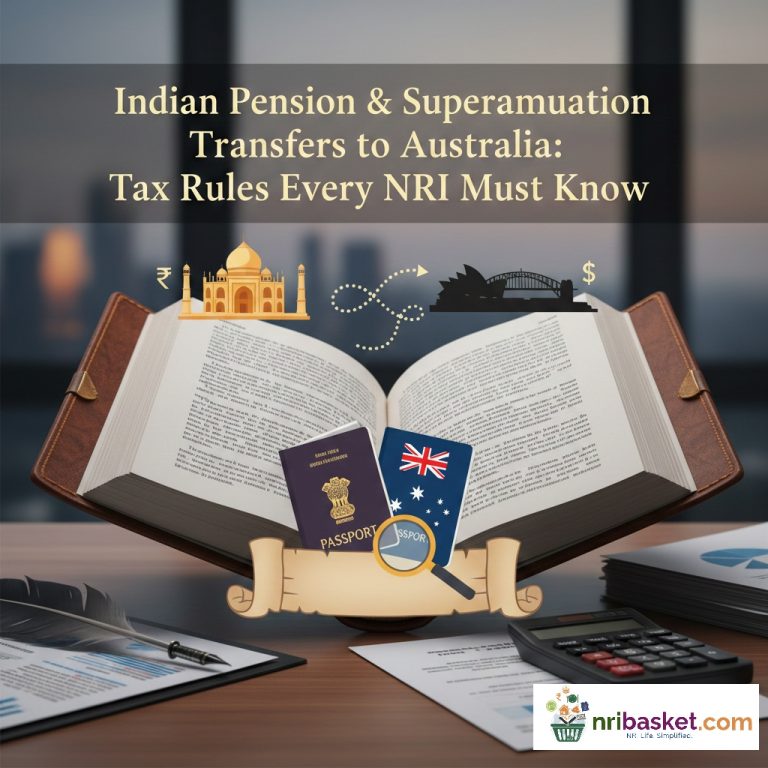
FBAR for Indian NRIs
If you’re a US resident or NRI with bank accounts or investments in India, you’re probably aware of the FBAR (Foreign Bank Account Report) filing requirement — but it can still feel confusing. The US government requires you to disclose certain foreign financial accounts each year using FinCEN Form 114 if their total value exceeds $10,000 at any point in the year.
For Indian NRIs in the US, this includes common accounts such as NRE, NRO, PPF, fixed deposits, and even mutual funds. The purpose is not to tax your money again, but to maintain transparency and prevent unreported offshore assets.
In this guide, you’ll learn:
Have a question or want us to add your scenario?
Tell us what you need — we’ll update this guide and answer publicly so other NRIs can benefit. Your question may be featured in the next update.
- Which Indian accounts are reportable under FBAR,
- The threshold and conversion rules,
- How to file FinCEN Form 114 online, and
- How to avoid FBAR penalties with timely and accurate reporting.
This complete guide breaks down the rules for FBAR reporting Indian bank accounts in simple human language — so you can stay compliant and stress-free every tax year.
Long Answer: Any US person, including NRIs living in the US (citizens, Green Card holders, or residents under the Substantial Presence Test), must file an FBAR if the total value of their foreign financial accounts exceeds $10,000 at any time during the year.
Long Answer: You must include all Indian bank accounts such as NRE, NRO, FCNR, PPF accounts, and investment accounts like mutual funds or Demat accounts, if the combined maximum value crosses $10,000.
Long Answer: If the total maximum balance across all your Indian financial accounts exceeds $10,000 (USD equivalent) at any time in the year, you must file FBAR. It’s not per account; it’s the total of all.
Long Answer: The FBAR (FinCEN Form 114) is due by April 15 each year for the previous calendar year, but an automatic extension to October 15 is available — no extra request is needed.
Long Answer: The FBAR is not filed with your tax return. You must submit it online through the US Treasury’s BSA E-Filing website using FinCEN Form 114. It’s free and separate from IRS filings.
Long Answer: Even if an account is jointly held with parents or spouse, you must include it on FBAR if your name is on it or if you can withdraw funds. Ownership or signing power counts.
Long Answer: Even though PPF is a long-term savings account, it is considered a foreign financial account. If your total assets cross $10,000, your PPF must be reported on FBAR.
Long Answer: Any investment account, including Indian mutual funds or Demat accounts, must be included in FBAR reporting if they hold financial assets and you have control or ownership.
Long Answer: All Indian account balances must be converted to US dollars using the **Treasury’s year-end exchange rate** for that tax year when calculating your FBAR values.
Long Answer: Non-filing or late filing can lead to severe penalties — up to $10,000 per non-willful violation and even higher for willful violations. It’s best to file even if unsure.
Long Answer: NRE and NRO accounts are both Indian financial accounts, and you must report them on FBAR if their combined balance exceeds $10,000 during the year.
Long Answer: Even inactive or zero-balance accounts must be reported if they are open under your name and were active during the year, as ownership still exists.
Long Answer: The rule applies even if your total combined balance exceeded $10,000 for just one day or even one minute during the year. FBAR is based on the maximum balance at any point.
Long Answer: Fixed deposits (FDs) are considered financial accounts for FBAR purposes. You must include the maximum value of all FDs along with your other Indian accounts.
Long Answer: Insurance policies with a savings or investment component (like LIC Money Back or ULIPs) must be included on FBAR as they hold financial value.
Long Answer: Indian EPF accounts are reportable on FBAR because they are foreign financial accounts under your name that accumulate value and interest.
Long Answer: Even if each account individually has less than $10,000, you must file FBAR if the combined value of all foreign accounts exceeds $10,000.
Long Answer: You can file an amended FBAR through the FinCEN system by choosing “Amended” and providing the correct information. It’s better to correct than to ignore errors.
Long Answer: FBAR (FinCEN 114) is filed with FinCEN, while FATCA (Form 8938) is filed with the IRS. You may need both if your Indian assets cross IRS FATCA thresholds.
Long Answer: If your mutual fund investments meet both FBAR and FATCA thresholds, you must report them on both forms. FBAR is for account value, FATCA for income and ownership.
Long Answer: Review your Indian bank or investment statements to find the maximum rupee balance during the year, then convert it to USD using Treasury year-end rates.
Long Answer: Indian banks report under FATCA for compliance, but that does not replace your personal FBAR filing responsibility with the US Treasury.
Long Answer: Credit card accounts are not considered financial accounts for FBAR purposes unless they have a positive balance or deposit feature.
Long Answer: You can authorize your CPA or tax professional to prepare and e-file your FBAR. However, you are ultimately responsible for ensuring it’s accurate.
Long Answer: Trading or Demat accounts holding cash or securities must be reported on FBAR, as they qualify as financial accounts under FinCEN rules.
Long Answer: FinCEN Form 114 is the official online form used to report your foreign financial accounts to the US Treasury’s Financial Crimes Enforcement Network.
Long Answer: If your child is a US citizen or resident and has foreign accounts in their name, you must file FBAR on their behalf if balances exceed $10,000 combined.
Long Answer: If you missed past FBAR filings unintentionally, you may qualify for the IRS Streamlined Filing Program to file late FBARs without heavy penalties.
Long Answer: As of now, FinCEN guidance does not require reporting of crypto holdings on FBAR, but this rule may soon change—stay updated each year.
Long Answer: Track all Indian accounts, keep year-end statements, use Treasury rates for conversion, and file FBAR annually. Consider professional help if your accounts are complex.
Above post explaines the FBAR reporting Indian bank accounts, FBAR threshold Indian assets, FBAR NRE account, FBAR NRO account, FBAR PPF reporting, Indian mutual fund FBAR, FinCEN Form 114 India, NRI FBAR filing, FBAR penalties India, how to file FBAR FinCEN, US tax Indian bank account, FBAR and FATCA India, NRI tax compliance USA if you have more question comment below.




